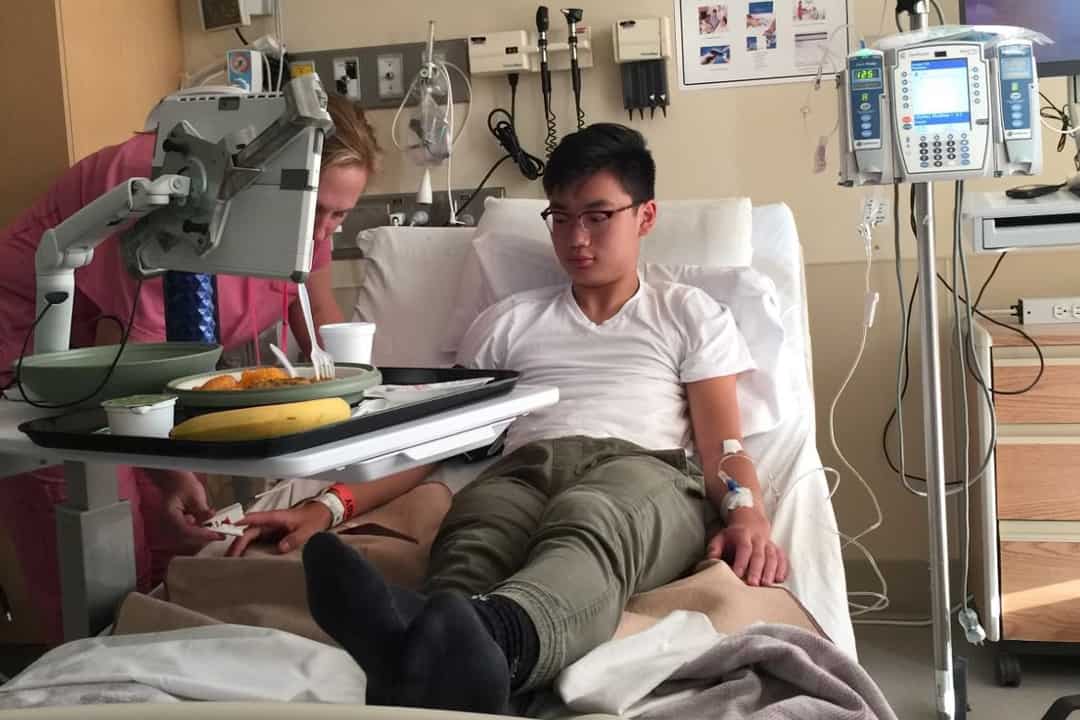Brandon Yu: Researching and living with autoimmune disease
When I was just 14 years old, I first encountered the flaws of science. I was diagnosed with an autoimmune disease — paediatric autoimmune neuropsychiatric syndrome — and doctors could only tell me: “We don’t know what’s going on with your body.”
At 16 years old, I was again face-to-face with autoimmune disease — a condition science couldn’t explain just yet.
I’ve fought off autoimmune diseases for the past six years, a family of conditions known to be, well, not well known. This was when I realized that this very mystery was the beauty of science: the pursuit of the unknown, a yearning to elucidate the various biological, chemical, and physical mechanisms that we encounter on a daily basis in hopes of making our lives a little bit better one day.
My name is Brandon, and I’m currently in my second year at UTSC. I’m also a Laidlaw Scholar, and at U of T, I have the chance to express my love for the unknown, that is autoimmunity, by pursuing research in this field.
Though I am still quite young, science teaches me to get excited about digging into the unknown. My experience with autoimmune conditions taught me that there’s still quite a bit we don’t know. Being left in the dark with unanswered questions makes my pursuit of science so meaningful and one that I look forward to with excitement and eager anticipation. And that’s why I love science.
Sila Usta: The complexity and humility of biology
“G-P-C-Rs, G protein-coupled receptors,” said my second-year cell biology professor, the letters echoing off the walls of Convocation Hall.
I heard my professor name one molecule and pair it with another and then another, and voilà, cascades of signalling molecules, adaptors, enzymes, and critical genes materialized right in front of my eyes. All these molecules simply did what their structures dictated, and yet the outcomes were enormous.
The synchrony, the compatibility, and the evolutionary imperfections led to the humbling recognition of vast clusters of atoms shuffling and bustling in the cell. Like a choreographed dance, every component ‘knew’ what to do and where to go. Like a computer code, every possible ‘decision’ was carved out.
Even when things went wrong, they went wrong in a certain way. I remember thinking, “I have to memorize all this?” and then, immediately after, “Okay, yeah, I can do that.”
Throughout my undergraduate years, I have continually recognized this combination of thrill and humility that I feel when solving molecular pathways. It has followed me into my third year as I major in cell and molecular biology, with particular interests in cancer and neurodevelopmental biology. I’m a member of the Cell and Systems Biology Students’ Union in hopes of fostering a community of student scientists in a vastly diverse, intensely complex, but ultimately beautiful field of science.
Nimit Vediya: Finding inspiration in the tech world
A few days ago, on The MedBoys Podcast, which is a podcast I created with a few friends, we had an artificial intelligence expert as a guest, and we started talking about Neuralink. Neuralink is one of Elon Musk’s companies and is dedicated to creating brain-computer interfaces to help people with disabilities such as vision loss, hearing loss, and others.
But the way I see it, the company’s real goal is to advance humankind as a whole by merging our brains with its Neuralink device, which is essentially analogous to having a cellphone or computer always connected to your brain.
The applications for this technology are endless: you could know everything that is on the internet, you would be able to communicate telepathically, and it could even help individuals with intellectual disabilities. You would basically be a superhero — like Vision from Marvel Comics.
As a student at U of T, I am studying neuroscience and psychology. When I come across companies such as Neuralink, it really makes me appreciate the subject I chose to study and reminds me why I chose it in the first place. Neuroscience is truly multidisciplinary: it is a field where engineers, scientists, and doctors work together on the same product to create something amazing.


